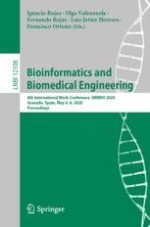2020 | OriginalPaper | Chapter
Graph Based Automatic Protein Function Annotation Improved by Semantic Similarity
Authors : Bishnu Sarker, Navya Khare, Marie-Dominique Devignes, Sabeur Aridhi
Published in: Bioinformatics and Biomedical Engineering
Publisher: Springer International Publishing
Activate our intelligent search to find suitable subject content or patents.
Select sections of text to find matching patents with Artificial Intelligence. powered by
Select sections of text to find additional relevant content using AI-assisted search. powered by
